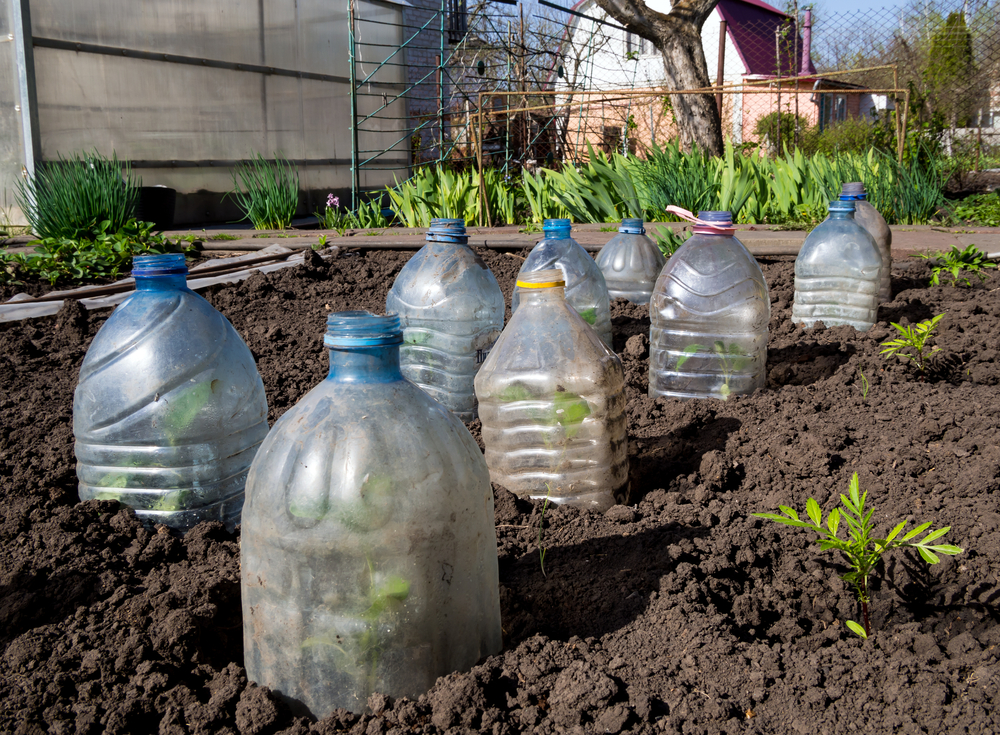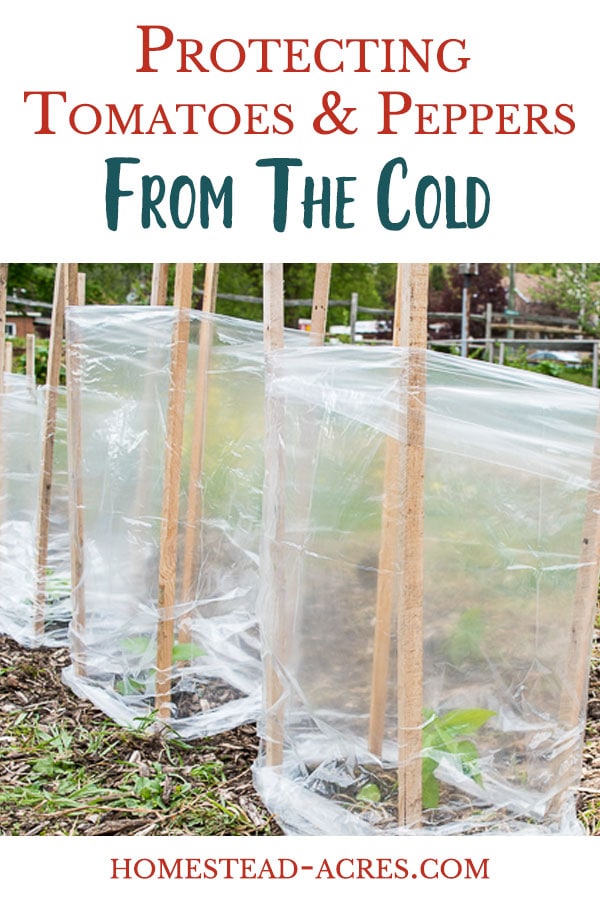To protect tomato plants from cold, cover them with mulch or use frost blankets. Tomatoes are a beloved addition to any garden, providing juicy and flavorful fruits.
However, cold temperatures can pose a threat to these tender plants, stunting growth or even killing them. To ensure the survival and health of your tomato plants, it’s important to take steps to protect them from the cold. We will explore effective methods to shield tomato plants from chilly weather, keeping them safe and thriving throughout the colder months.
By implementing these techniques, you can safeguard your tomato plants and continue to enjoy a bountiful harvest, even in frosty conditions. So, let’s dive in and discover how to protect tomato plants from cold temperatures.

Credit: www.ruralsprout.com
Why Tomato Plants Are Susceptible To Cold Damage
Tomato plants are highly vulnerable to cold temperatures, which can have a significant impact on their growth and fruit production. The vulnerability of tomato plants to cold is primarily attributed to their tropical origins and their inability to withstand freezing temperatures.
When exposed to cold temperatures, tomato plants experience various negative effects. Cold stress can hinder their overall growth by slowing down metabolic processes and inhibiting nutrient uptake. Moreover, cold temperatures can lead to leaf damage, resulting in discoloration, wilting, and even necrosis. These damaged leaves can further impair the plant’s ability to photosynthesize and produce energy for fruit development.
Furthermore, cold stress can also affect the fruit production of tomato plants. Flowers may fail to develop and set fruit, leading to a decrease in yield. Additionally, cold temperatures can impair the quality of the fruits, causing issues such as uneven ripening, flavor alteration, and increased susceptibility to diseases.
To protect tomato plants from cold damage, various measures can be taken, including covering them with cloths or plastic sheets, using mulch to insulate the soil, and providing supplemental heat sources if necessary. By implementing these precautions, gardeners can help ensure the successful growth and productivity of their tomato plants even in colder climates.
How to Protect Tomato Plants from Cold: Step by Step Guide
Assessing Cold Tolerance Of Tomato Varieties
Understanding the cold hardiness of tomato varieties is crucial when it comes to protecting tomato plants from cold temperatures. Assessing the cold tolerance of different tomato varieties is essential in determining which varieties are more likely to withstand colder conditions. There are several factors that can affect a tomato plant’s ability to withstand cold temperatures.
| Factors Affecting Tomato Plant’s Ability to Withstand Cold |
|---|
| Genetic makeup of the variety: Some tomato varieties naturally have a higher tolerance for cold temperatures while others are more susceptible to damage. |
| Age and maturity of the plant: Young tomato plants are generally less tolerant to cold compared to more mature plants. |
| Acclimation: Tomato plants that have been gradually exposed to cooler temperatures are more likely to handle cold better. |
| Environmental conditions: Factors such as humidity, wind, and frost can greatly impact a tomato plant’s ability to withstand cold. |
| Protective measures: Proper mulching, using row covers, and providing additional insulation can help protect tomato plants from cold temperatures. |
By understanding these factors and assessing the cold tolerance of different tomato varieties, you can take appropriate measures to protect your tomato plants from cold and ensure their healthy growth.
Preparing Tomato Plants For Cold Weather
Timing for preparing tomato plants for cold weather is crucial in ensuring their survival during the winter months. It is important to start taking steps to protect your tomato plants before the arrival of cold temperatures.
Removing damaged foliage is the first step in preparing tomato plants for cold weather. Any leaves or stems that show signs of disease or damage should be pruned and discarded to prevent the spread of infection.
Adding protective organic mulch around the base of the plants can help insulate the soil and retain heat. This can be done using materials such as straw, leaves, or compost.
Providing windbreaks for plants can also help shield them from harsh winds and frost. This can be achieved by placing stakes or a barrier around the plants.
By taking these steps before the arrival of cold temperatures, you can protect your tomato plants and increase their chances of surviving the winter months.
Providing Adequate Protection For Tomato Plants
When it comes to protecting tomato plants from cold weather, it is essential to provide adequate protection. This can be achieved by creating temporary or permanent structures that shield the plants from chilly temperatures.
One option is to use cloches or row covers, which are protective coverings placed directly over individual plants or rows. These structures help to trap heat and create a warmer microclimate around the plants, preventing frost damage.
Another approach is to construct cold frames or hoop houses. Cold frames are enclosed structures with a transparent top, usually made of glass or plastic, that allow sunlight to enter and warm the interior. Hoop houses, on the other hand, are larger structures made with a series of curved hoops covered with plastic sheeting.
For more substantial protection, high tunnels or greenhouses can be employed. These structures provide a controlled environment and allow for climate regulation, ensuring that the tomato plants are shielded from the cold and other unfavorable weather conditions.
Shielding Tomato Plants During Cold Spells
Monitoring weather forecasts for potential frost or freeze is crucial. To protect tomato plants from cold, implementing protective measures is essential. Covering tomato plants with blankets or tarps helps to shield them from freezing temperatures. It is also recommended to use outdoor heaters or heat lamps strategically placed near the plants to provide additional warmth. Another effective method is employing water as a protective measure. By watering the plants thoroughly before a cold spell, water acts as insulation and helps to preserve heat in the soil, protecting the roots of the tomato plants.
Maintaining Tomato Plant Health In Cold Conditions
Proper irrigation is crucial for maintaining tomato plant health during cold weather. It is important to strike a balance between providing enough water and preventing over-watering, which can lead to root rot. One way to ensure proper irrigation is to water the plants deeply and infrequently, allowing the soil to dry out slightly between watering sessions. This helps to prevent waterlogged soil and keeps the roots healthy.
In addition to irrigation, managing pests and diseases during cold periods is also essential. Cold weather can create an ideal environment for certain pests and diseases to thrive. Regularly inspecting the plants for any signs of infestation or disease, such as yellowing leaves or wilting, helps to catch and treat the problems early.
Maintaining the health of tomato plants in cold conditions requires careful attention to irrigation and pest management. By adopting these measures, you can protect your tomato plants and ensure their continued growth and productivity.
Post-cold Care For Tomato Plants
Assessing cold damage and potential plant losses is essential to determine the necessary measures for protecting tomato plants. After a cold spell, it is common to find damaged plants with wilted leaves, discolored stems, and frost-affected fruits. To revive and rehabilitate these affected plants, start by removing any dead or damaged foliage and branches. This will allow the plant to focus its energy on new growth. Pruning should be done with care to avoid causing further stress to the plant.
Feeding and nurturing the plants after cold exposure is crucial for their recovery. Apply a balanced fertilizer to provide essential nutrients and promote healthy growth. Additionally, mulching around the plants can help regulate soil temperature and protect the roots from further cold damage. Watering should be done selectively, ensuring the plants receive enough moisture without becoming waterlogged.
Important note: It is important to note that preventing cold damage in the first place is the best approach. Consider using frost blankets or coverings to shield the plants from freezing temperatures. Remember to remove the covers during the day to allow sunlight and proper air circulation.
Frequently Asked Questions On How To Protect Tomato Plants From Cold
At What Temperature Should I Cover Tomato Plants?
Cover tomato plants when the temperature drops below 50 degrees Fahrenheit to protect them from frost.
What Cold Temps Can Tomato Plants Tolerate?
Tomato plants can tolerate cold temperatures between 50°F to 55°F (10°C to 13°C). They may survive brief drops to 40°F (4°C), but prolonged exposure to freezing temperatures can damage or kill the plants.
What Is The Nighttime Temperature For Tomatoes?
The nighttime temperature for tomatoes should be around 60-70 degrees Fahrenheit.
Will Tomatoes Survive A Freeze If Covered?
Covering tomatoes during a freeze can help protect them from damage. However, prolonged exposure to extremely cold temperatures can still harm the plants. It is best to cover them with materials like blankets or tarps, but ensure they are not touching the plants directly.
Conclusion
To safeguard your tomato plants from the harsh cold weather, it is crucial to take preventive measures. By covering the plants with frost cloth, mulching the soil with organic materials, and providing a protective barrier, you can protect your precious crops from freezing temperatures.
Remember to keep an eye on weather forecasts and adjust your protection methods accordingly. With these simple yet effective techniques, you can ensure the health and survival of your tomato plants even during the coldest months of the year.

